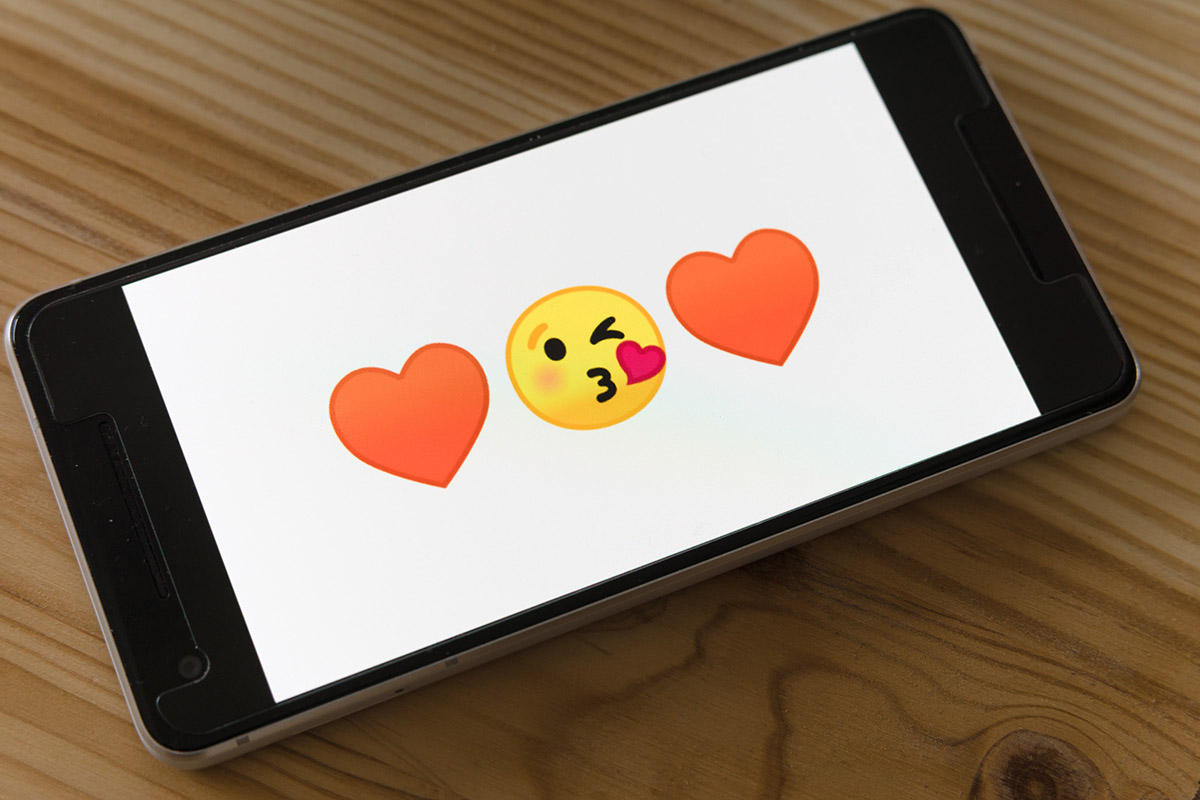In the world of modern communication, the use of emojis has become a common way to express emotions and add flair to our messages. But when it comes to texting a guy, the question arises: is it okay to use emojis? While some may argue that emojis can be seen as juvenile or unprofessional, others believe that they can enhance the conversation and make it more enjoyable. This article explores the pros and cons of using emojis when texting a guy, helping you navigate the emoji-filled world of texting etiquette.
Understanding the Purpose of Emojis
Emojis as a Form of Expression
Emojis have become an integral part of our modern digital communication landscape. These small, colorful icons provide a visual representation of emotions, ideas, and actions, enabling us to express ourselves in a more nuanced and engaging way. In the context of texting a guy, emojis can help convey emotions that may otherwise be difficult to express through words alone.
Emojis for Clarification and Tone
Text messages can sometimes be ambiguous, and tone can easily be misinterpreted. Emojis can come to the rescue by adding clarity and helping to set the right tone. For example, a simple smiley face can indicate that you’re joking, while a thumbs-up emoji can express agreement or approval. By using emojis strategically, you can minimize the risk of misunderstanding and ensure that your message is received as intended.
Emojis for Playfulness and Flirting
Emojis can also be employed to inject playfulness and flirtation into your texts with a guy. A wink emoji or a cheeky grin can add a touch of flirtatiousness and make your conversations more lighthearted and enjoyable. However, it’s essential to strike a balance and gauge the other person’s comfort level and receptiveness to such emojis, as this can vary from person to person.
Consider the Communication Context
Consider the Relationship Status
Before sending emojis to a guy, it’s essential to consider the nature of your relationship. If you’re texting a new acquaintance or crush, using emojis sparingly and cautiously can help to maintain a sense of mystery and allow the conversation to develop organically. On the other hand, with a long-term partner or boyfriend, emojis may be a regular part of your communication, and their usage may be more natural and relaxed.
Consider the Nature of Conversation
Emojis should be used in a manner appropriate to the context of the conversation. If you’re discussing serious or sensitive topics with a guy, it’s best to avoid excessive or inappropriate emoji usage, as this may trivialize the significance of the discussion. On the other hand, if the conversation is light-hearted or casual, emojis can enhance the overall tone and make the interaction more enjoyable for both parties.
Consider Cultural Differences
While emojis have transcended language barriers and become a universal form of communication, it’s important to be mindful of cultural differences when texting a guy. Certain emojis may carry different connotations or interpretations based on cultural norms and contexts. Being aware of these cultural nuances can help prevent misunderstandings or unintentional offense.
The Pros of Using Emojis
Enhancing Emotional Expressions
Text messages often lack the visual and auditory cues we rely on in face-to-face conversations to convey emotions effectively. Emojis serve as a valuable tool for bridging this gap by allowing us to add emotional context to our messages. Whether it’s a heart emoji to express love or a sad face to convey sympathy, emojis enable us to infuse our texts with greater emotional depth and authenticity.
Adding Playfulness and Lightness
One of the significant advantages of using emojis when texting a guy is the ability to inject a sense of playfulness and lightness into the conversation. Emojis can make your texts feel more engaging and enjoyable, fostering a relaxed and friendly atmosphere. They can help break the ice, alleviate tension, and create a positive impression, especially during the early stages of getting to know someone.
Creating a Sense of Connection and Understanding
Emojis have the power to foster a sense of connection and understanding between two people. By using emojis that resonate with the other person or reflect their emotions, you can establish a stronger bond and demonstrate empathy. Emojis also provide an opportunity for non-verbal communication, allowing you to express support, encouragement, or congratulations with a simple thumbs-up or a high-five emoji.
The Drawbacks of Using Emojis
Potential Misinterpretations
Although emojis can enhance communication, they are not without their drawbacks. One major concern is the potential for misinterpretation. Emojis can be subjective, and their meaning may vary from person to person. What you intend as a friendly gesture may be perceived as flirtatious or vice versa. It’s important to be aware of these potential misinterpretations and choose emojis carefully, taking into account the individual’s communication style, relationship, and cultural background.
Overuse and Lack of Authenticity
Using emojis excessively can also have a negative impact on your texting interactions. Over-reliance on emojis can make your messages appear insincere or lacking in authenticity. Instead of relying solely on emojis to convey emotions, it’s important to supplement them with genuine words and expressions. Strive for a balance that allows your true personality to shine through while utilizing emojis to enhance rather than replace meaningful communication.
Dependency on Emojis for Effective Communication
While emojis can be a valuable aid in conveying emotions and adding depth to your texts, it’s crucial not to become overly dependent on them. Relying solely on emojis can detract from the richness of communication and hinder the development of a deeper connection. Emojis should be seen as a complementary tool rather than a substitute for effective verbal and written expression.
Different Scenarios of Texting a Guy
Texting a New Acquaintance or Crush
When texting a new acquaintance or crush, it’s important to gauge the other person’s comfort level with emoji usage. Start by using emojis sparingly and gradually increase their frequency based on their positive response. Use emojis that align with the overall tone of the conversation, keeping it light and friendly. Be cautious with flirty emojis and use them only if you sense mutual interest and receptiveness.
Texting a Long-term Partner or Boyfriend
In the context of a long-term partnership or boyfriend, emojis may already be an established part of your communication style. If that’s the case, feel free to use emojis more liberally and express your emotions through them. Emojis can add an element of fun and playfulness to your texts and help maintain a light-hearted connection. However, continue to be mindful of the appropriate usage, as overdoing it may diminish the impact.
Texting a Casual Friend or Colleague
When texting a casual friend or colleague, emojis can be used judiciously to add a touch of informality and warmth to your messages. Gauge the other person’s reaction and adapt your emoji usage accordingly. Stick to universally understood emojis and avoid those with unclear meanings or potential for misinterpretation. Professional boundaries must be maintained, and it’s essential to strike the right balance between friendliness and professionalism.
Read the Guy’s Communication Style
Consider His Emoji Usage
Observing the guy’s emoji usage can give you valuable insights into his communication style and preferences. If he frequently uses emojis, it may indicate that he is open to and appreciative of their use in conversations. On the other hand, if he rarely or never uses emojis, it could mean that he prefers a more straightforward and concise mode of communication. By paying attention to his emoji usage, you can adapt your own style accordingly.
Observe His Response to Emojis
Pay close attention to the guy’s response when you include emojis in your texts. If he reciprocates with emojis or acknowledges them positively, it’s a good indication that he appreciates and understands their purpose in the conversation. However, if he consistently ignores or doesn’t respond to your emojis, it might suggest that he either doesn’t understand their intent or doesn’t place much importance on them. Adapt accordingly to ensure effective communication.
Adapt to His Communication Style
Every person has their own unique communication style, and it’s important to adapt to their preferences when texting a guy. If he prefers a more casual and lighthearted approach, feel free to use emojis to add a playful touch to your texts. However, if he tends to favor a more straightforward and concise style, it might be best to limit your emoji usage and focus on clear and concise wording to convey your thoughts and emotions effectively.
Understanding Personal Preferences
Ask for His Opinion
To gain a deeper understanding of the guy’s perspective on emojis, consider directly asking for his opinion. Initiate a conversation about texting styles and comfort levels to ensure that both parties are on the same page. Open and honest communication about personal preferences can help create a more harmonious and enjoyable texting environment where both individuals feel understood and respected.
Respect Individual Comfort Levels
Respecting individual comfort levels is paramount when it comes to emoji usage. While emojis can be fun and expressive, not everyone may feel comfortable using or receiving them. Take into account the guy’s preferences and be sensitive to any potential discomfort he may have. If he explicitly expresses a dislike for emojis or seems unperturbed by their absence, it’s crucial to respect his wishes and adjust your communication style accordingly.
Adjust Based on Feedback
Flexibility and adaptability are key in any form of communication. If the guy provides feedback or expresses a preference for a specific emoji style or less frequent usage, be open to adjusting your approach. Communication is a two-way street, and finding a middle ground that caters to both individuals’ preferences can contribute to healthier and more meaningful exchanges.
Finding a Balance in Emoji Usage
Use Emojis Sparingly
To strike a balance in emoji usage, it’s generally best to use them sparingly, especially in the early stages of communication. Overloading your messages with emojis can dilute their impact and make your texts harder to read and understand. Instead, choose a few well-placed emojis that effectively convey your intended emotions or messages, ensuring that they enrich rather than overshadow your texts.
Use Emojis in Response
An effective technique for moderating emoji usage is to mirror the other person’s level of emoji usage. If they incorporate emojis regularly, feel free to respond in kind, while being mindful not to go overboard. On the other hand, if the guy prefers a more minimalist style, follow suit and use emojis sparingly. Mirroring his emoji usage establishes a sense of harmony and synchrony in your communication.
Consider Alternate Forms of Expression
While emojis can be a convenient and expressive way to enhance your texts, they are not the only tool at your disposal. Consider other forms of expression, such as words, to convey your emotions and thoughts. By using descriptive language, sharing personal anecdotes, or simply asking direct questions, you can foster deeper connections and engage in more profound conversations beyond the limitations of emojis.
Alternative Non-Emoji Ways of Communicating
Using Words to Express Emotions
Never underestimate the power of simple words in communicating emotions. Thoughtfully chosen words can paint vivid images in the recipient’s mind and evoke a wide range of feelings. Instead of relying exclusively on emojis, strive to articulate your emotions through well-crafted sentences that reflect your true thoughts and feelings. This not only enhances the depth of your communication but also showcases your ability to express yourself effectively.
Utilizing GIFs and Memes
GIFs and memes offer another alternative to emojis when it comes to adding visual elements to your texts. These animated images and humorous snippets can convey complex emotions or ideas in a concise and entertaining manner. However, similar to emojis, it’s important to use the appropriate GIFs and memes that align with the conversation and the other person’s sense of humor. Exercise judgment and choose wisely to ensure your chosen GIF or meme is well-received.
Using Emoticons or Kaomojis
Emoticons and kaomojis are simple and creative ways to express emotions using keyboard characters. Emoticons, such as 🙂 or :D, can seamlessly convey happiness or excitement, while kaomojis, such as ( ̄﹏ ̄) or ╰(°▽°)╯, add a touch of quirkiness or playfulness. These textual expressions can be a fun and nostalgic way to inject personality into your texts without relying on visual icons. Experiment with different combinations and find ones that reflect your intended emotions accurately.
Conclusion
Emojis can be a valuable tool in modern communication, including texting with a guy. They provide a means of expression, aid in clarifying tone, and add a playful element to conversations. However, it’s crucial to consider the context, relationship status, and cultural differences when using emojis. Understanding the purpose, pros, and drawbacks of emojis can help you navigate their usage effectively.
Pay attention to the guy’s communication style and adapt accordingly. Respect individual preferences and adjust your emoji usage based on feedback. Finding a balance in emoji usage involves using them sparingly, responding in a manner aligned with the other person’s style, and considering alternative forms of expression beyond emojis.
Ultimately, effective communication prioritizes understanding. Whether through emojis, words, GIFs, or other means, the goal is to connect and convey thoughts and emotions authentically. Emojis can be used, but always be mindful of their potential impact and adapt to individual preferences for more meaningful and enjoyable conversations.




